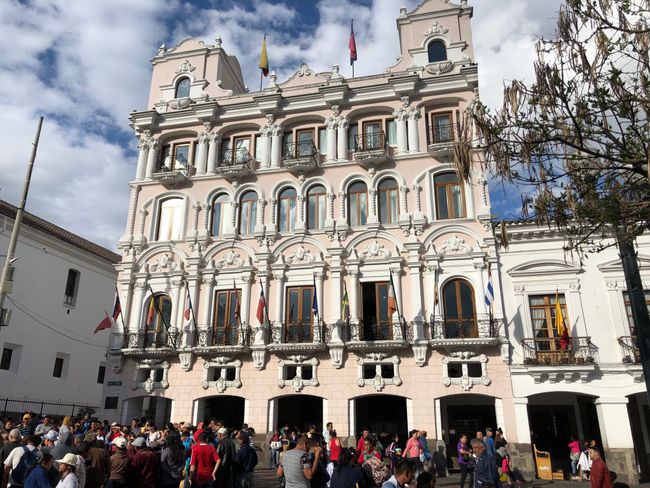3 weeks Colombia
Pubblicato: 30.12.2018
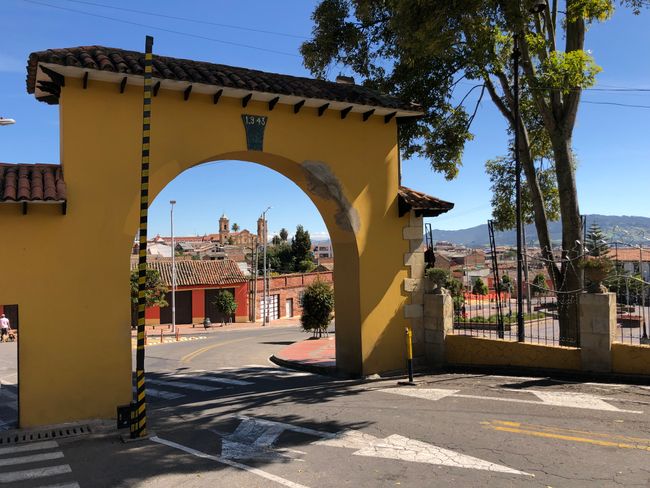
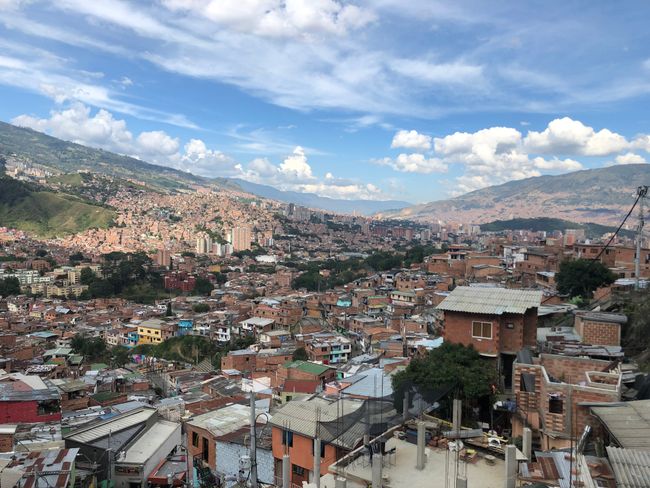
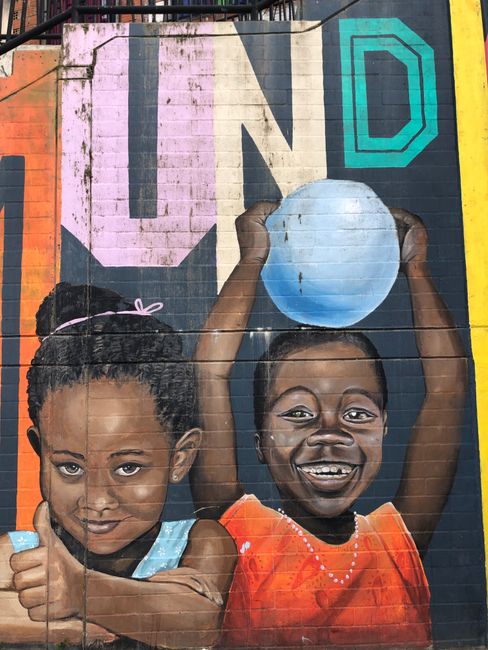
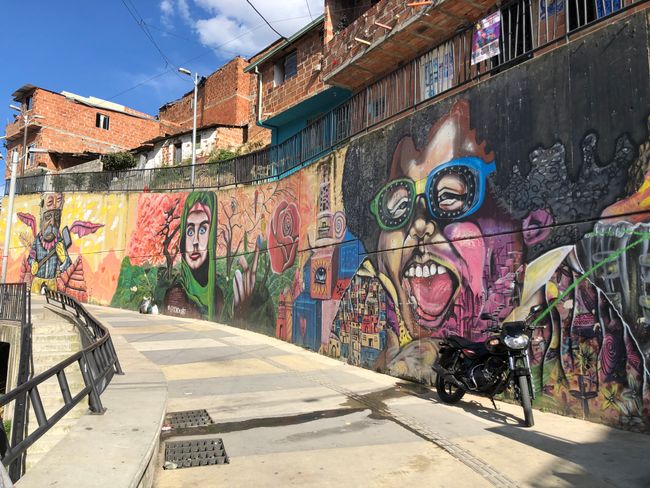
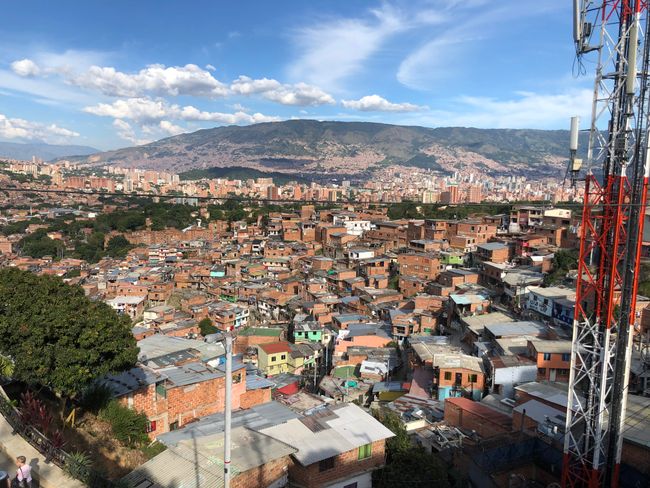
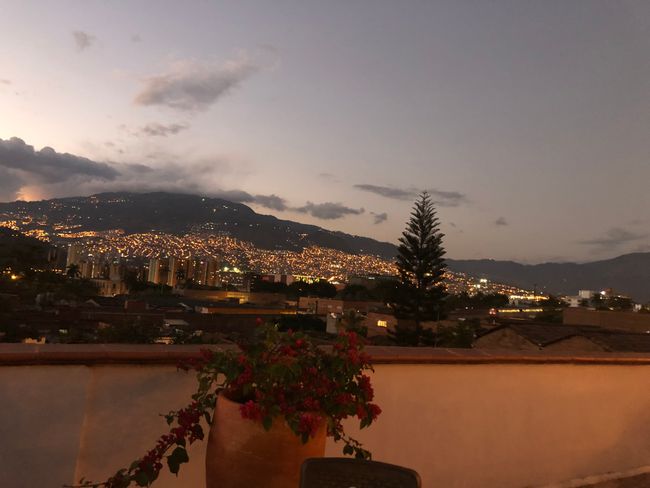
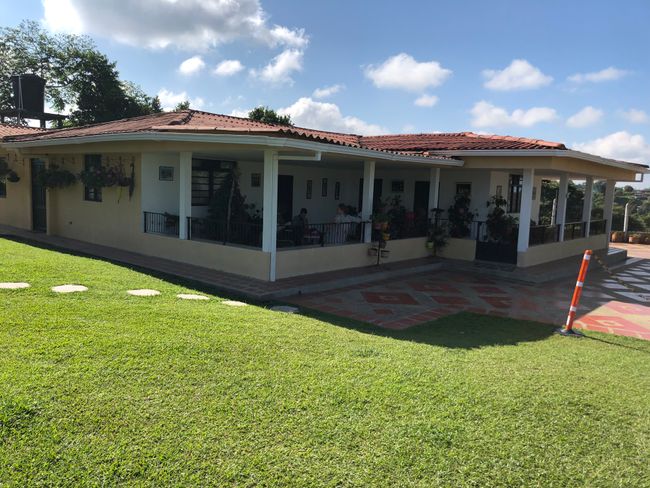
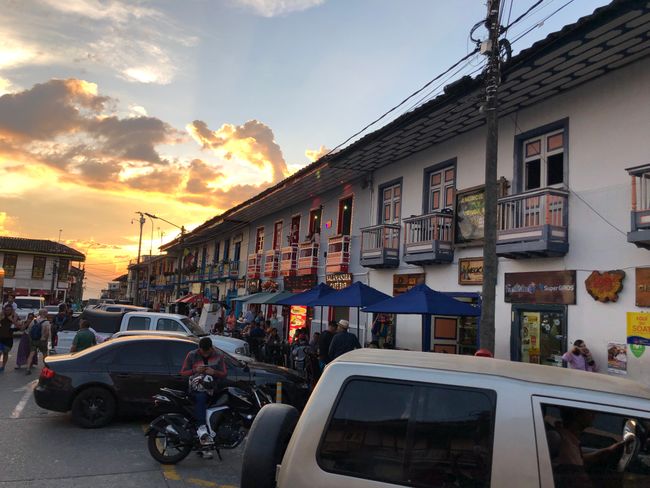
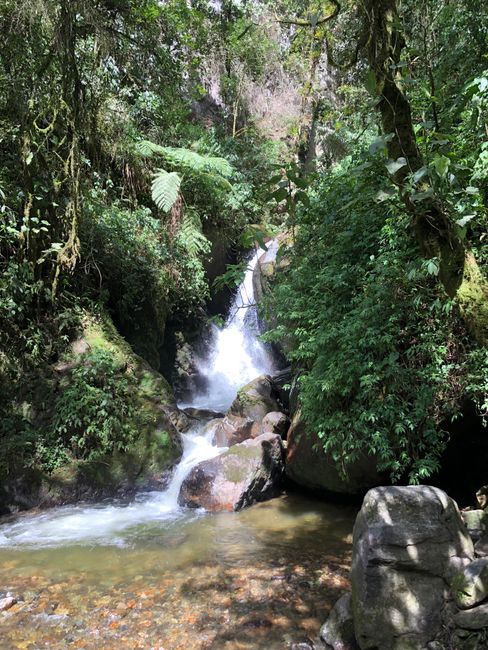
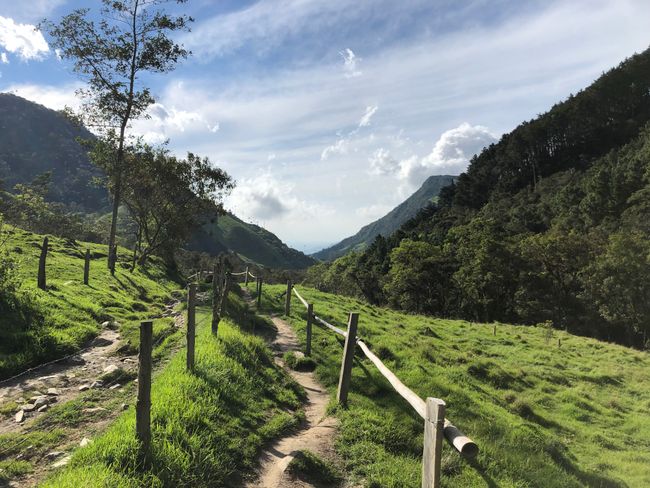
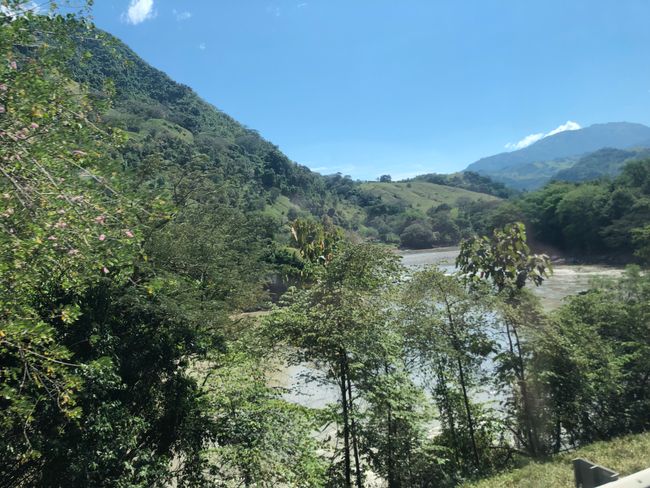
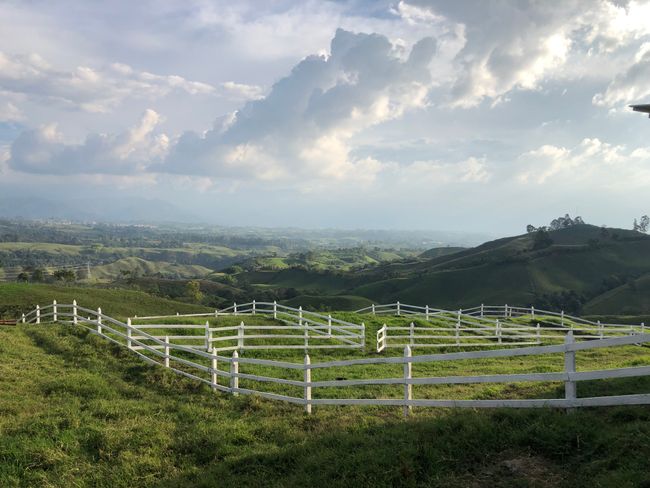
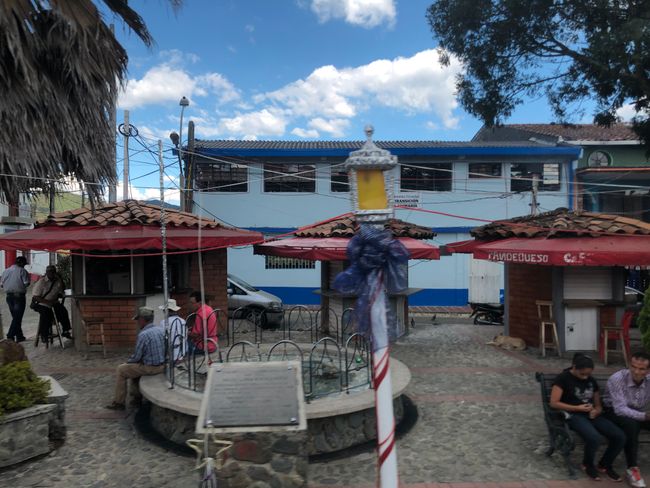
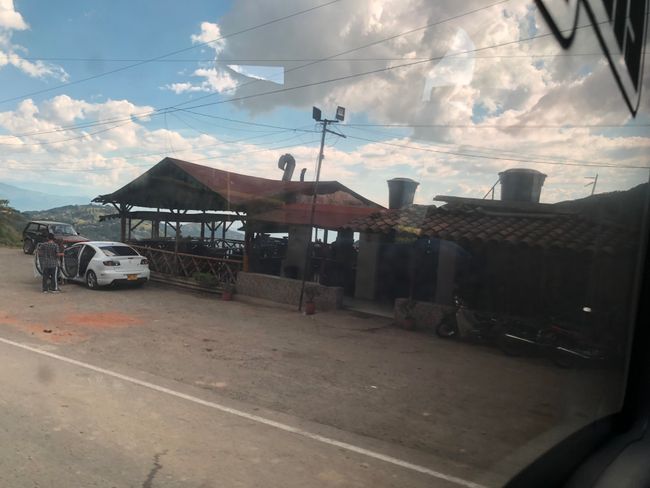
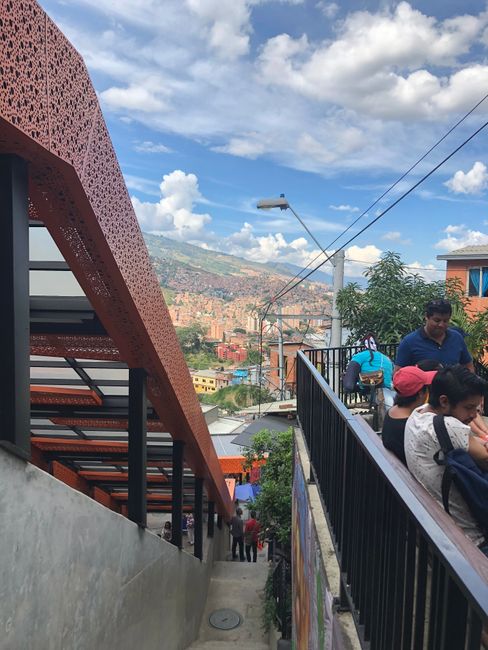
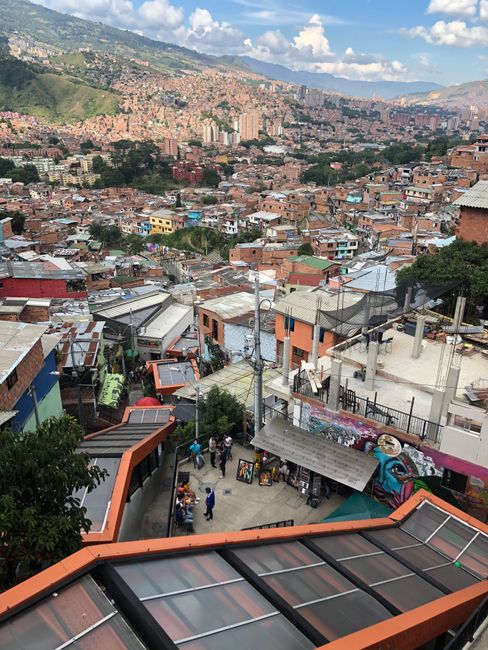
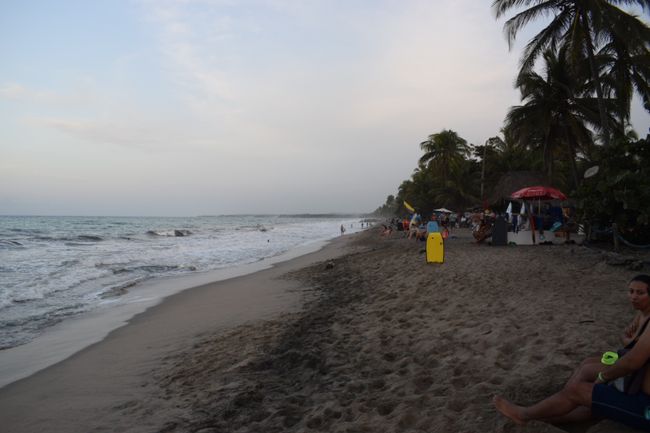
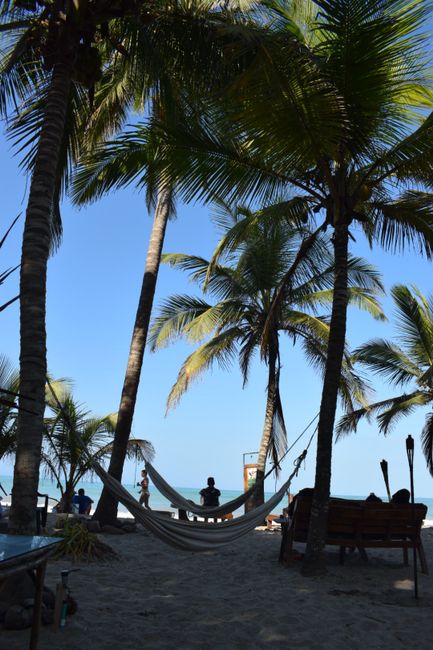
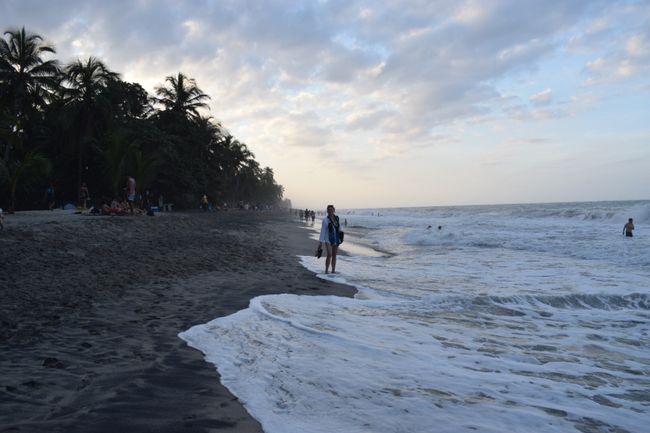
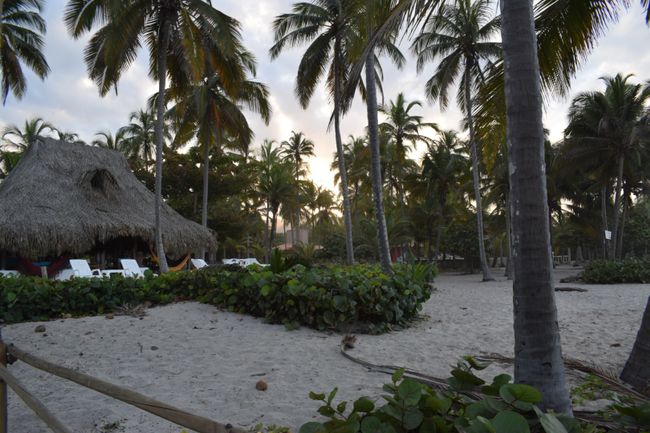
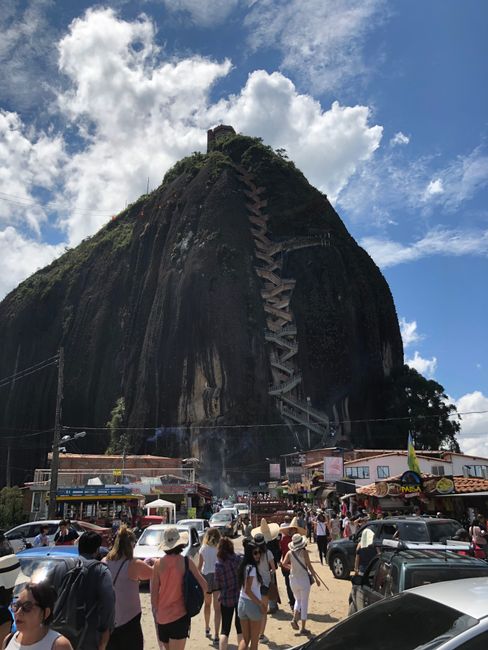
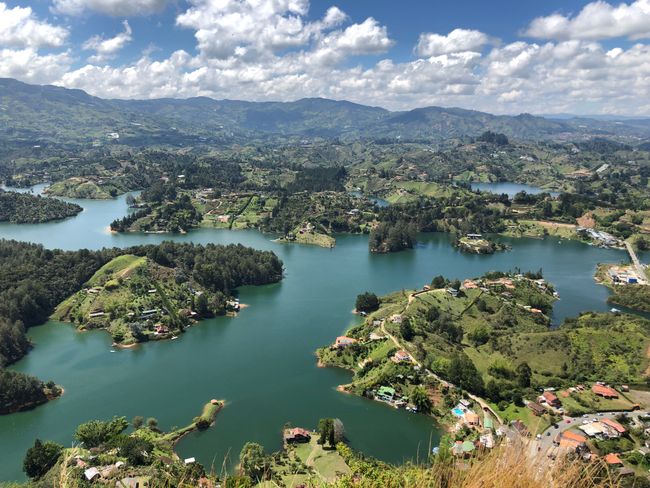
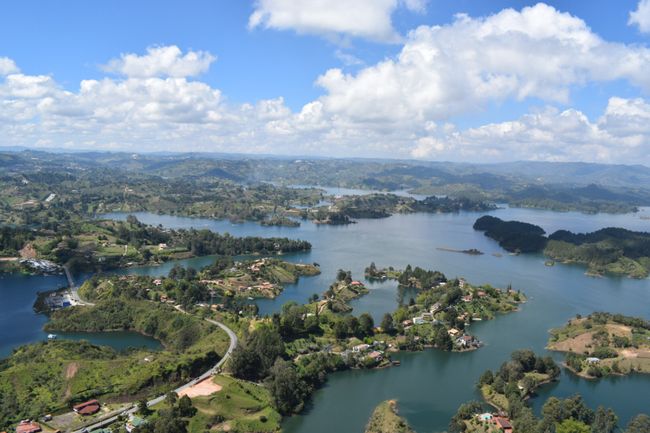
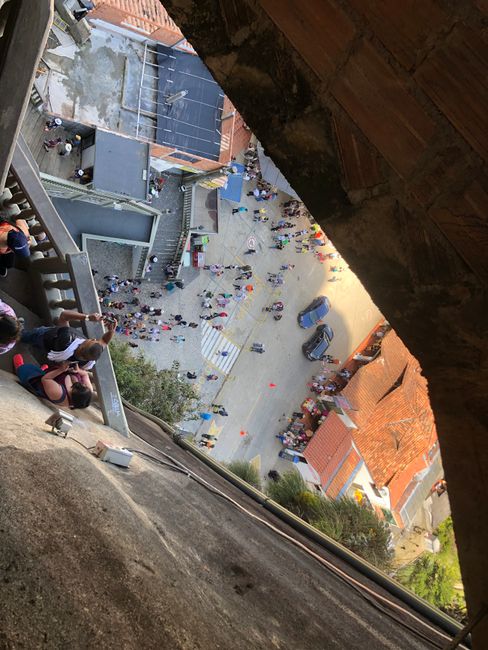
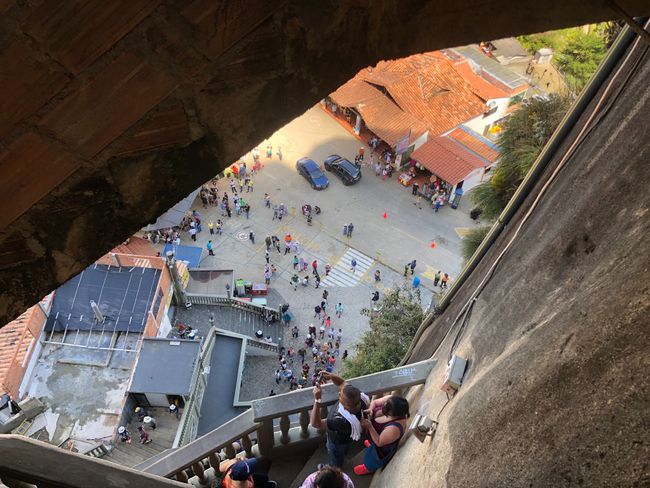
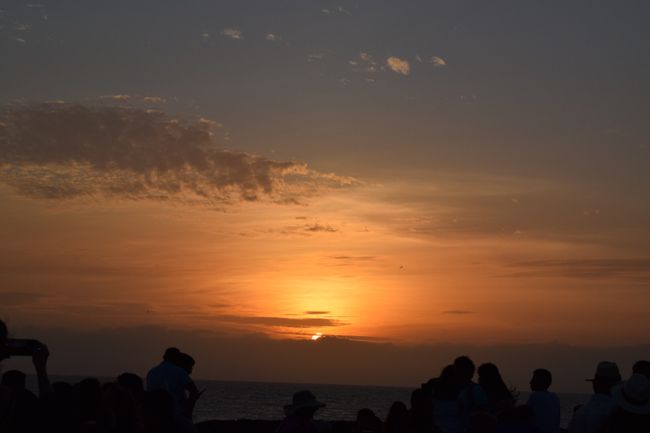
Iscriviti alla Newsletter
After one week alone in Ecuador, I am now going to Colombia; first stop: Bogota, from there I went directly to Zipaquirá by bus. It took a while to find out about the right bus lines, but it was worth it: this is the busiest day of the year: weekend before Christmas and Christmas Eve is Monday. In that respect, the bus was a good choice, because there are bus lines on every highway, so the bus basically drives without traffic jams.
Zipaquirá was also a good choice: top hostel (coffee house), very beautiful city with the Plaza de la Independencia and the Parque principal with the very remarkable cathedral and the colonial houses all around.
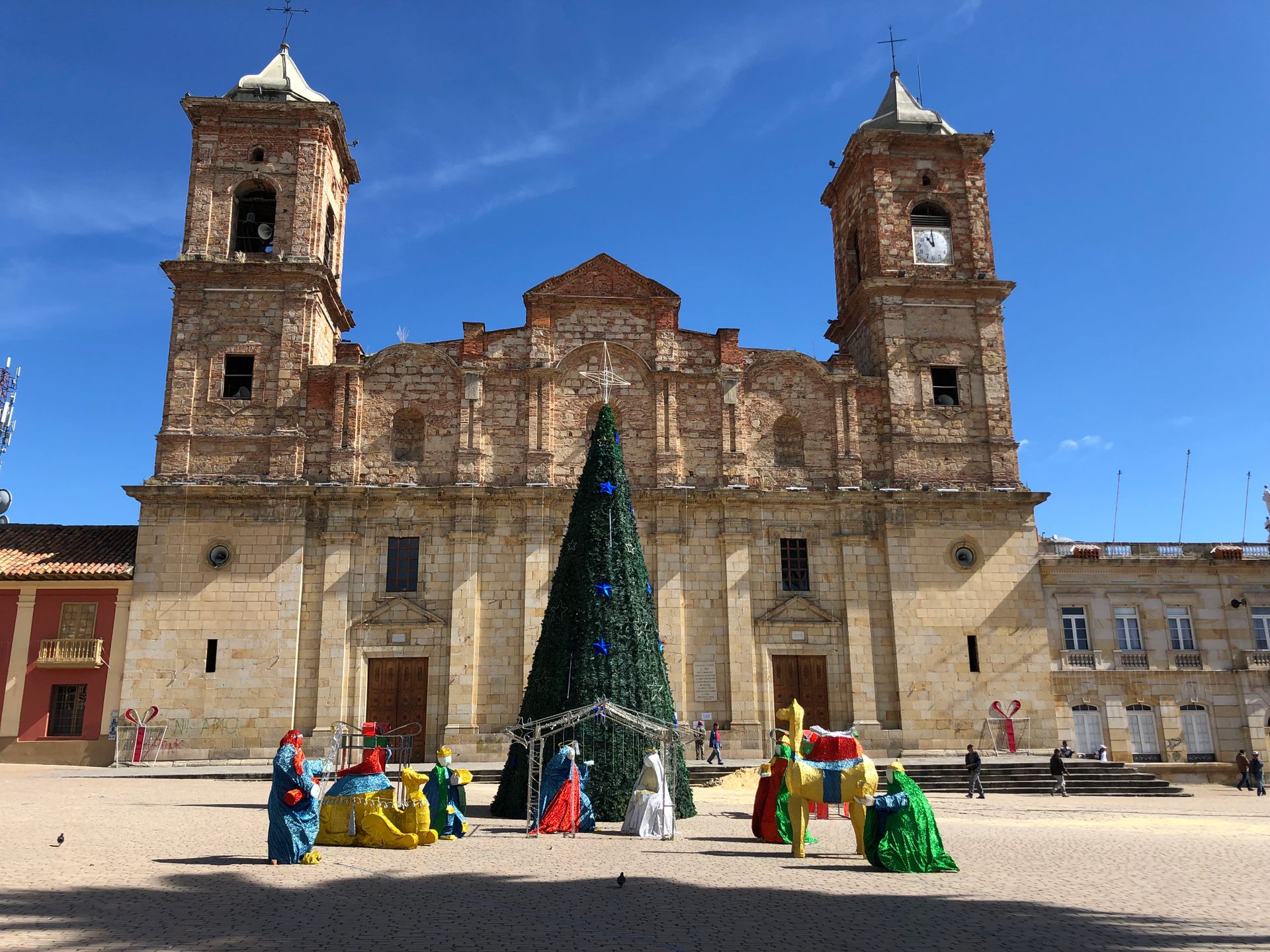
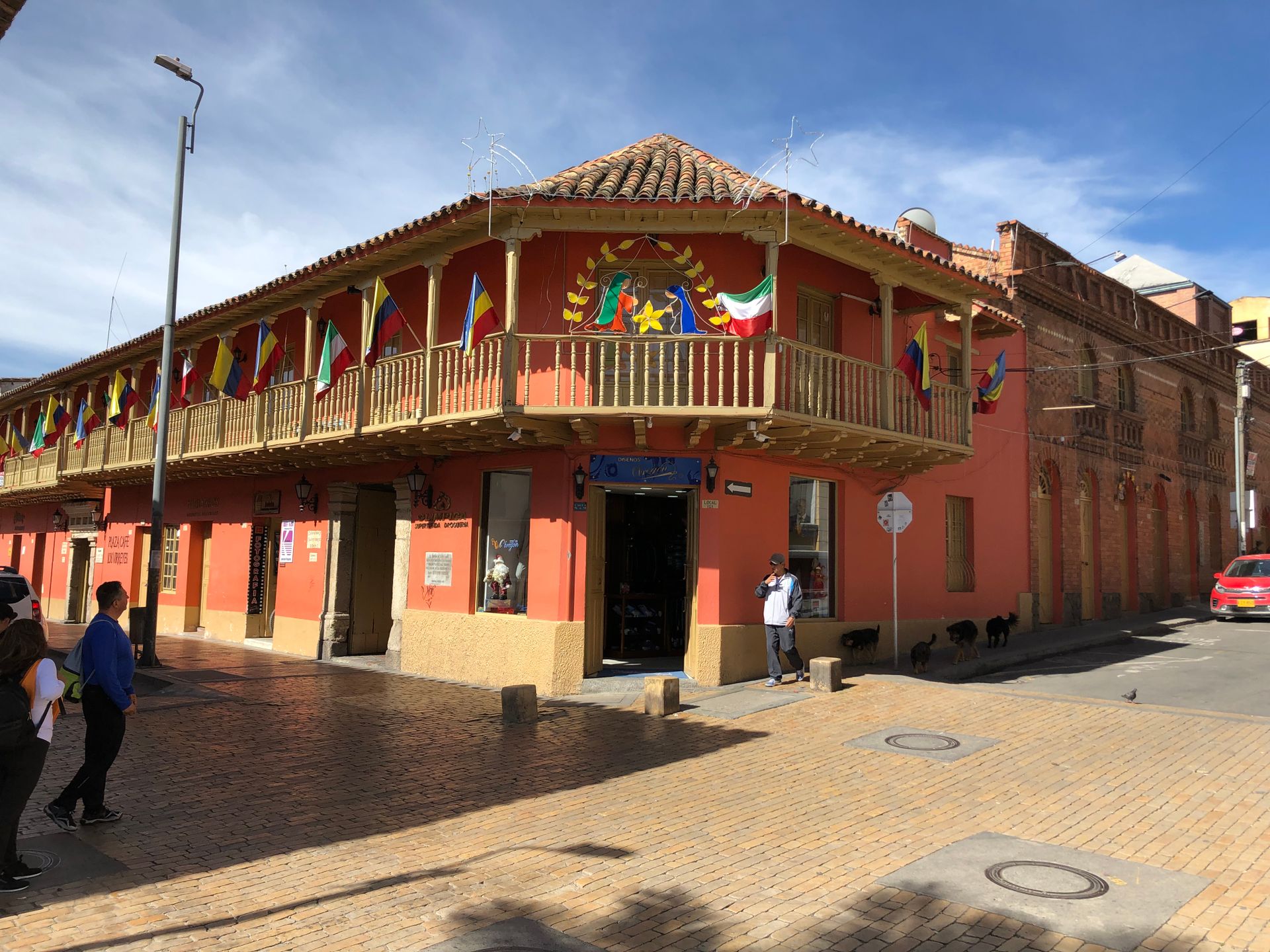
But the absolute highlight was the Salkz Cathedral, which I actually didn't want to visit, but it was simply beautiful: over the years, the miners of the salt mine have built a fabulous cathedral in the mine. It's hard to describe, but it's incredibly impressive. You have to go there!
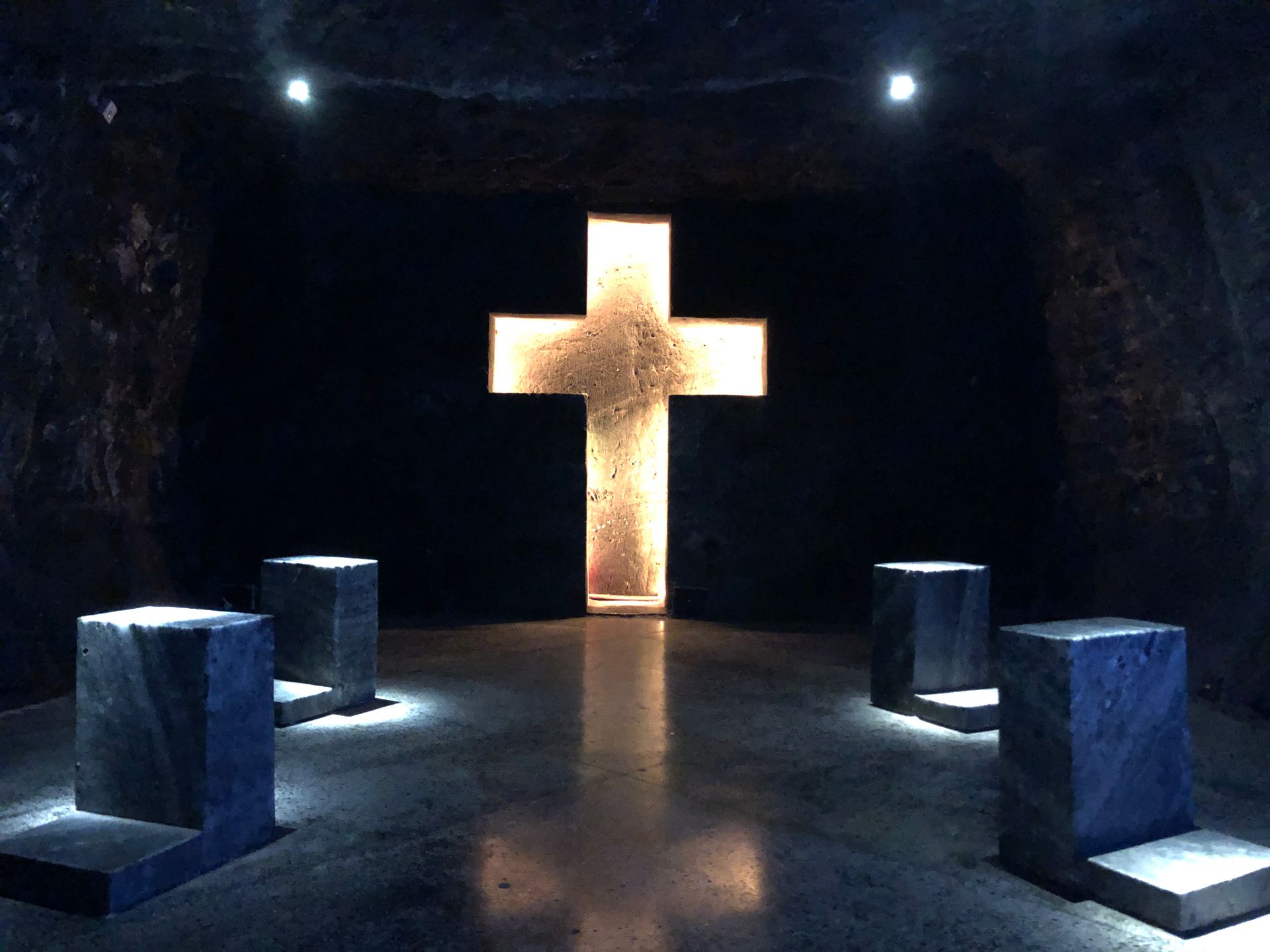
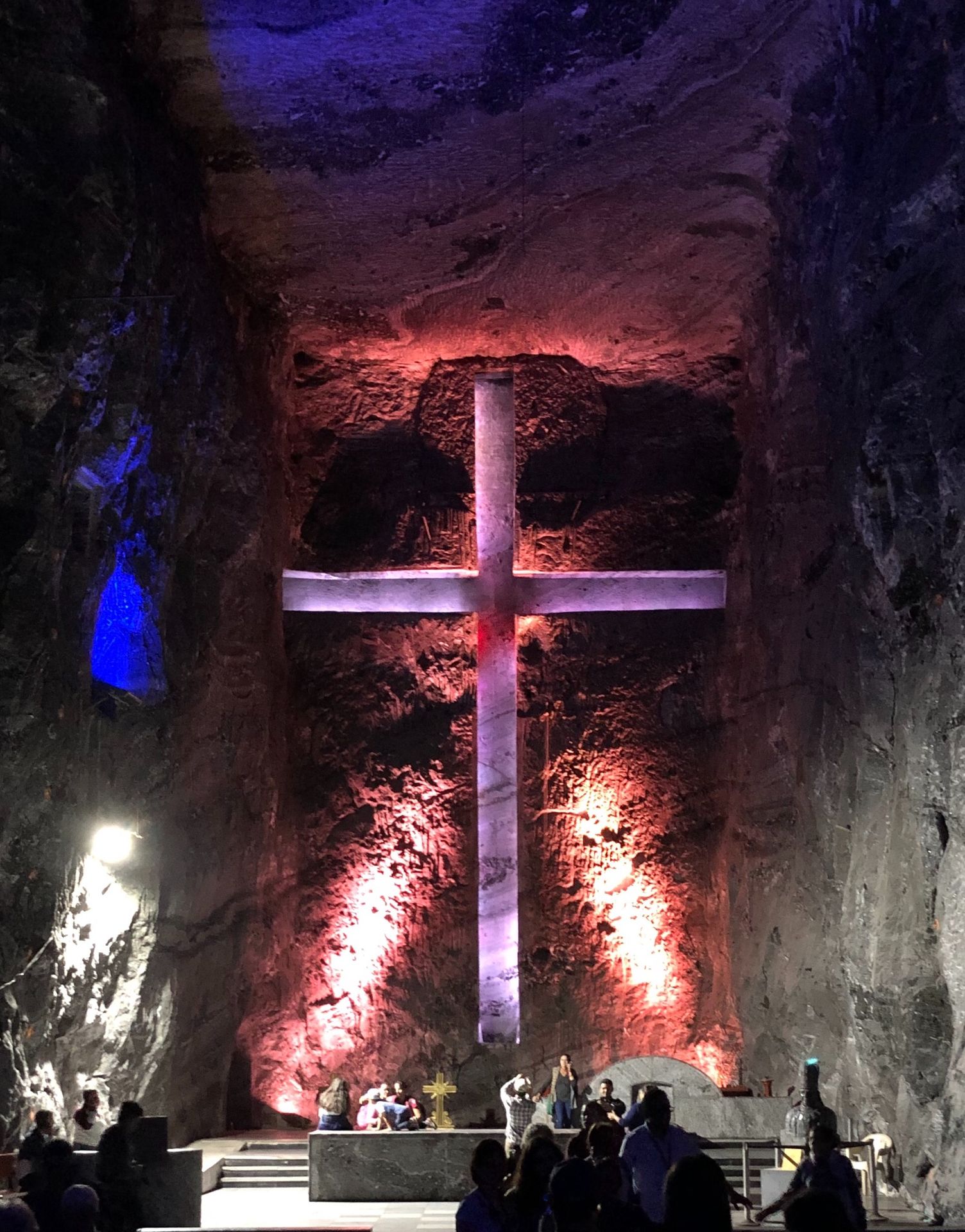
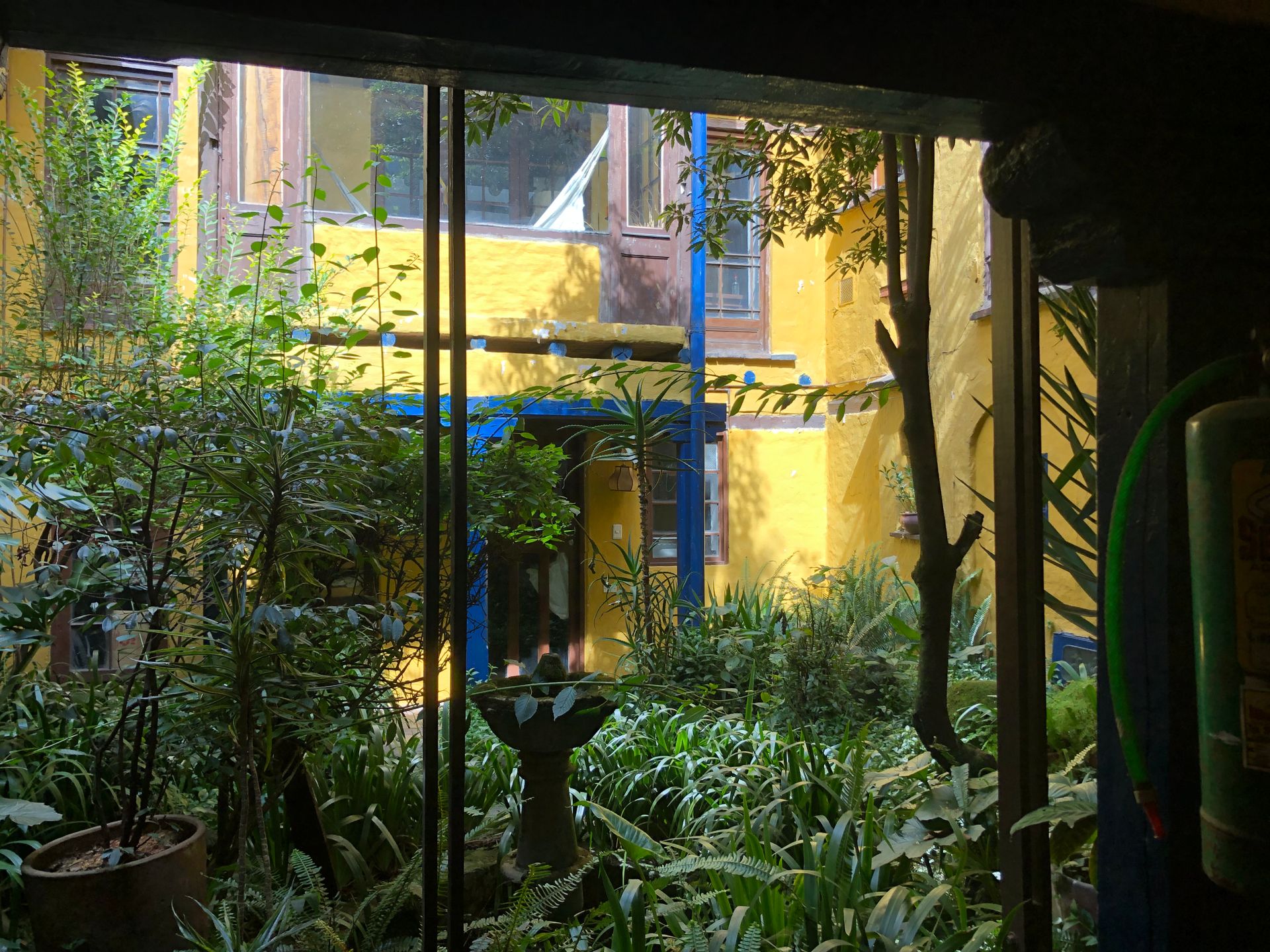
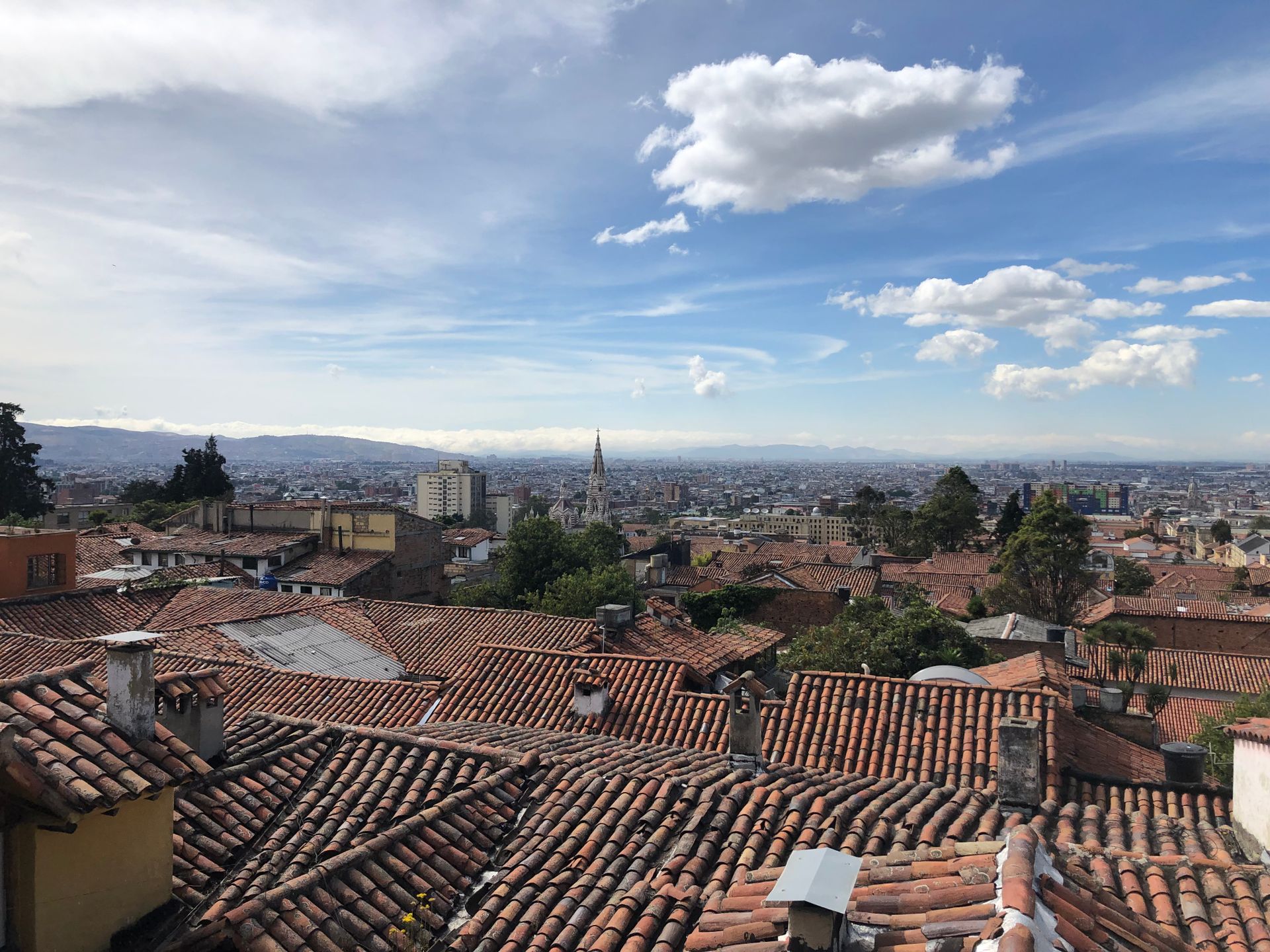
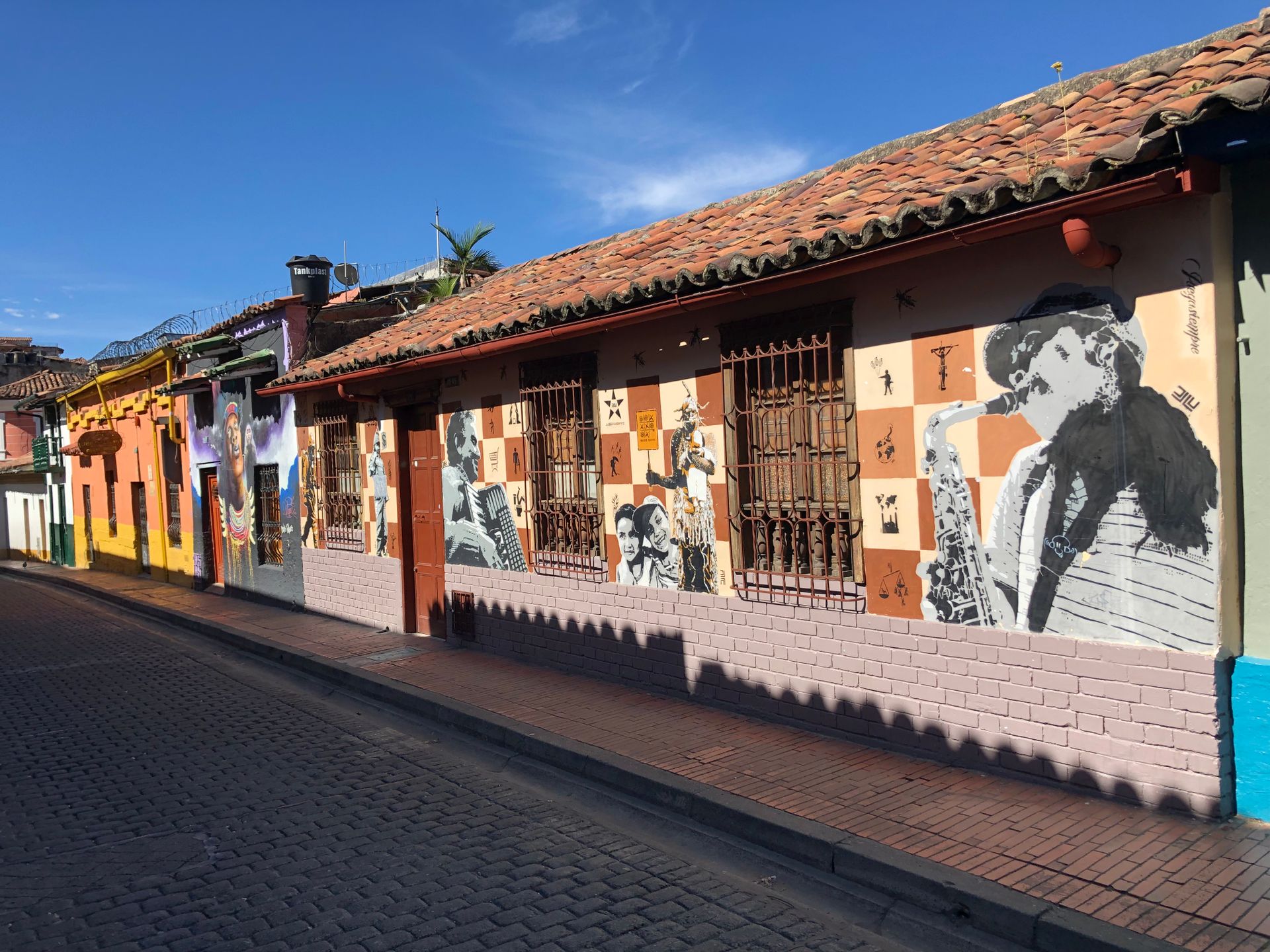
Back to Teleferiqo; strolling through the neighborhood and a flea market, we actually found the valley station and went up. Unlike in Quito, there are 2 cable cars next to each other here, not several cabins behind each other. But it's much faster.
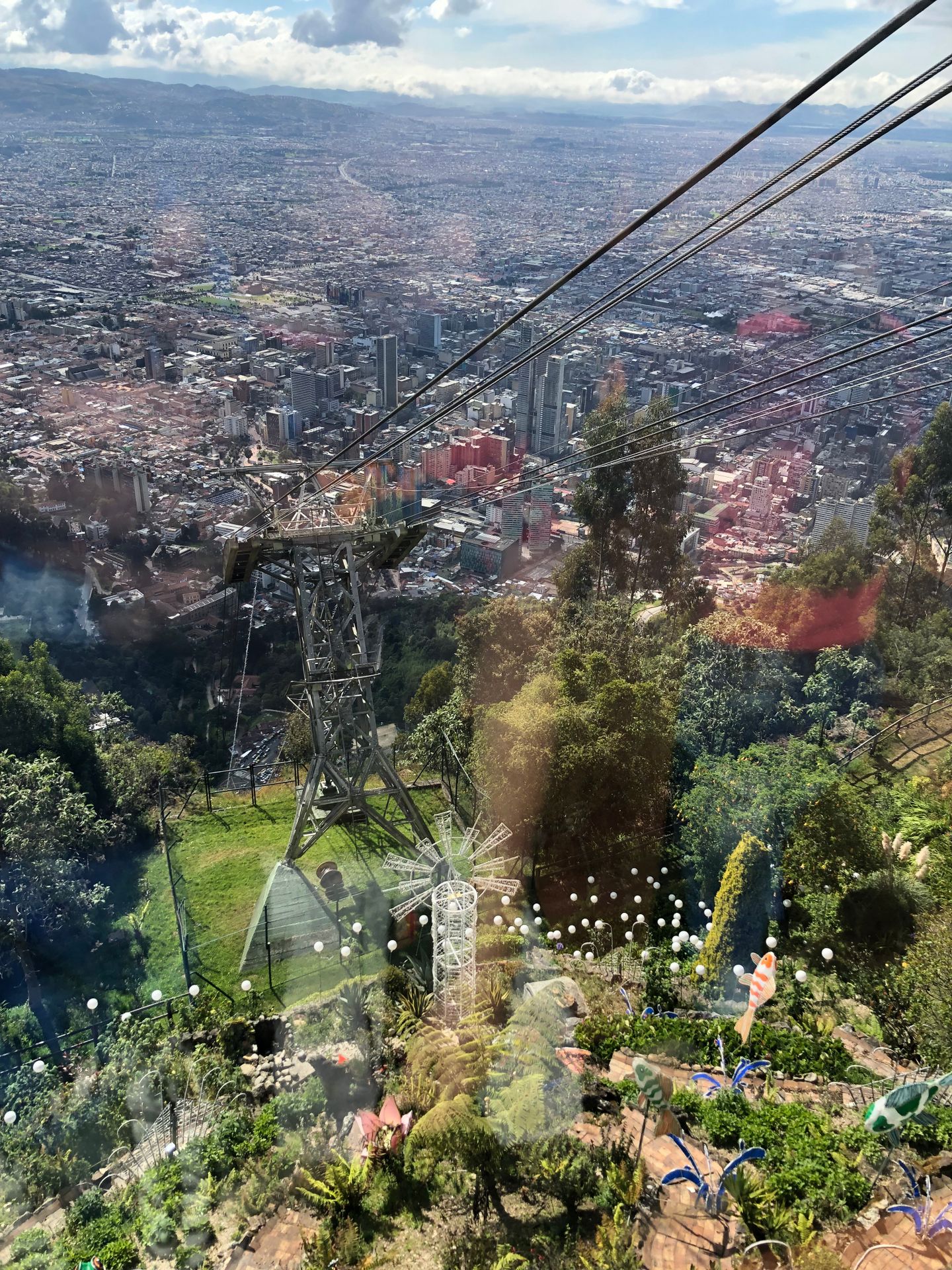
Arriving at the top, you have a very impressive view over the city, especially on clear days, like ours. At the top is the Monserrate church and you can follow a circular path before going back down.
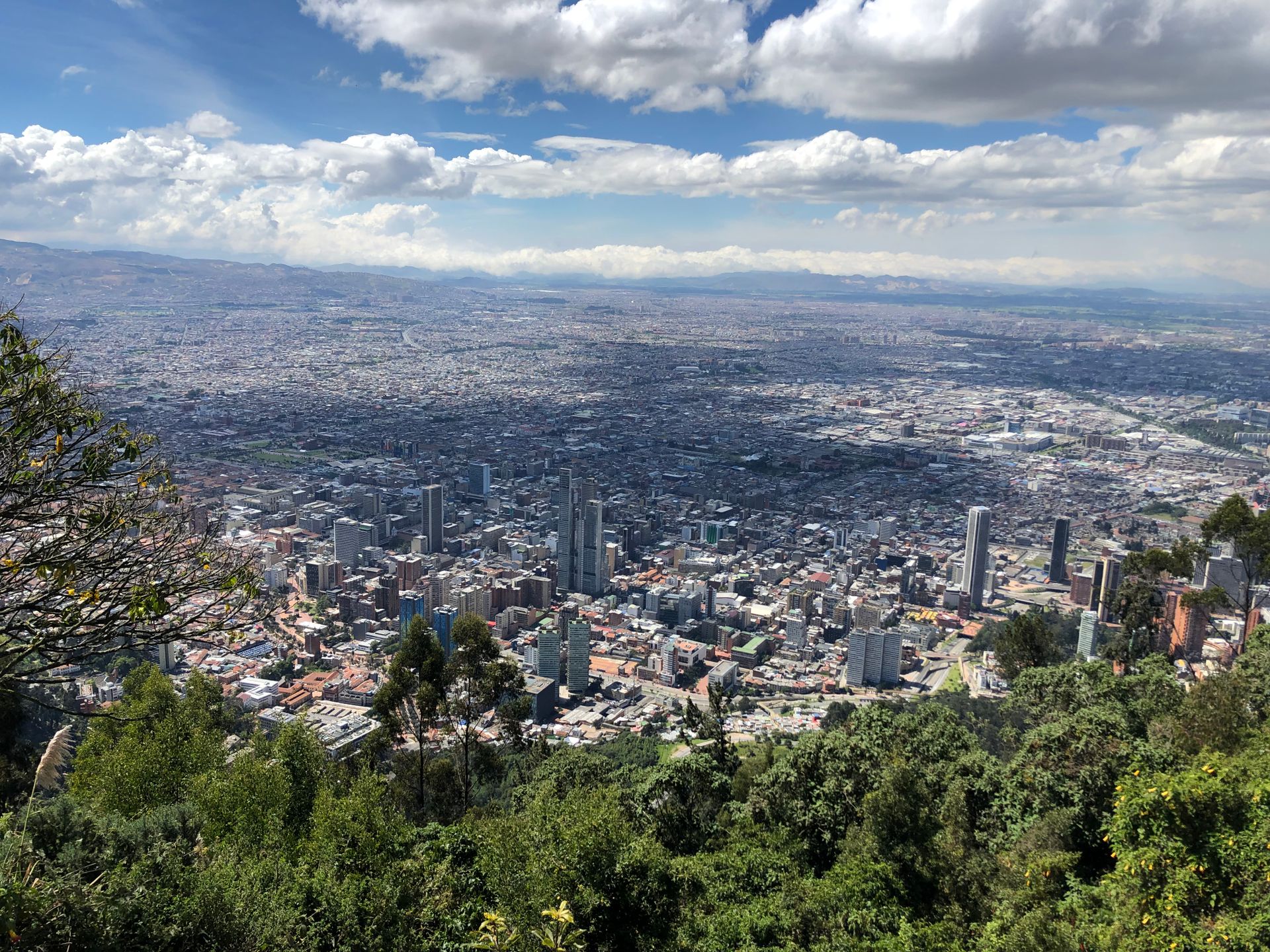
Since it was very crowded, we went back down rather quickly. On the way back, we passed numerous street food stands, one more delicious than the other; with skewers and fried banana, we lay down in a nearby park next to Casa Quinta de Bolivar and feasted.
The next day, Christmas Eve, we strolled through our neighborhood; mainly around Plaza Bolivar. Unfortunately, Jona was still not feeling well, so I took him home to rest. I walked with the girls along Septima to Plaza de La Independencia and back.
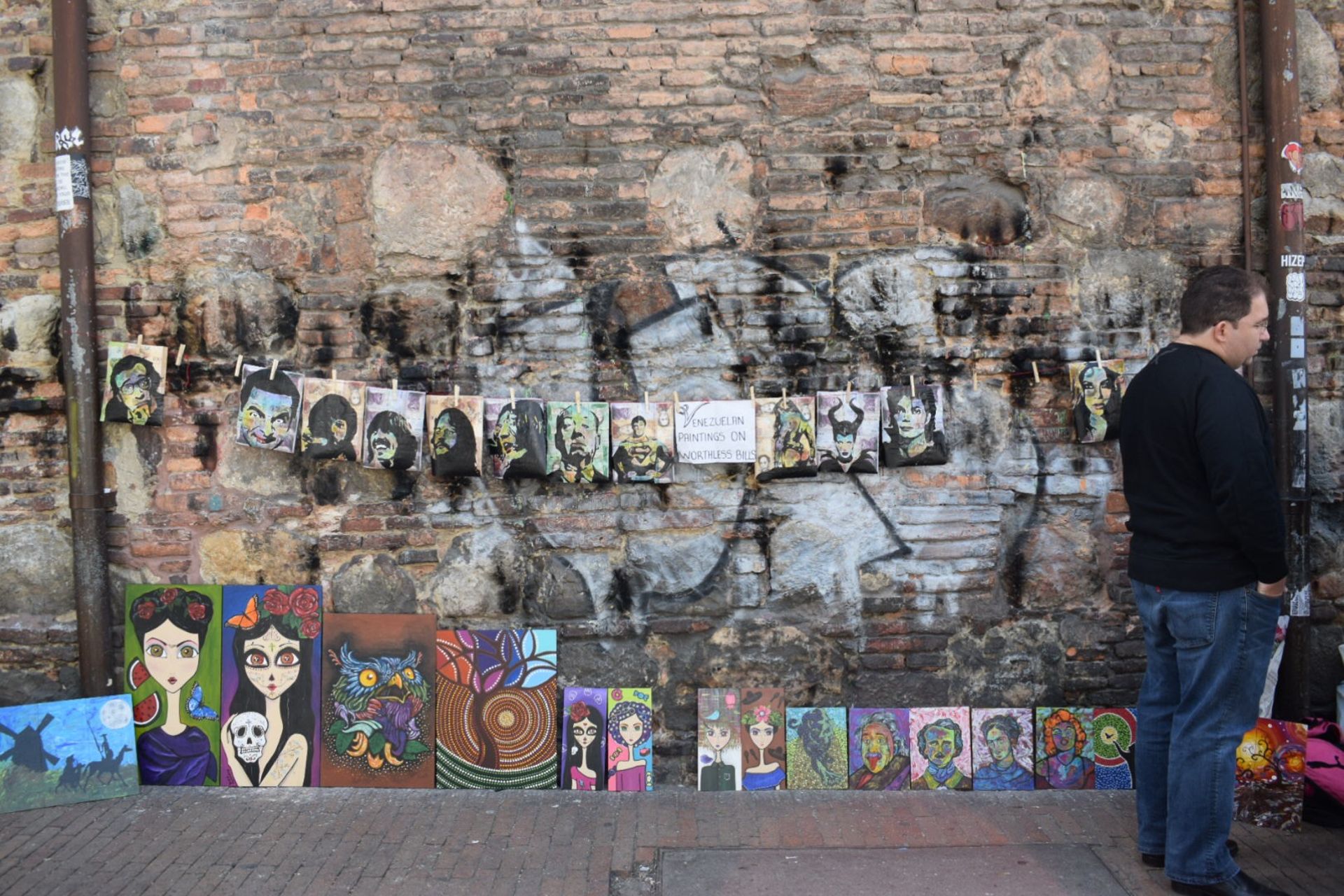
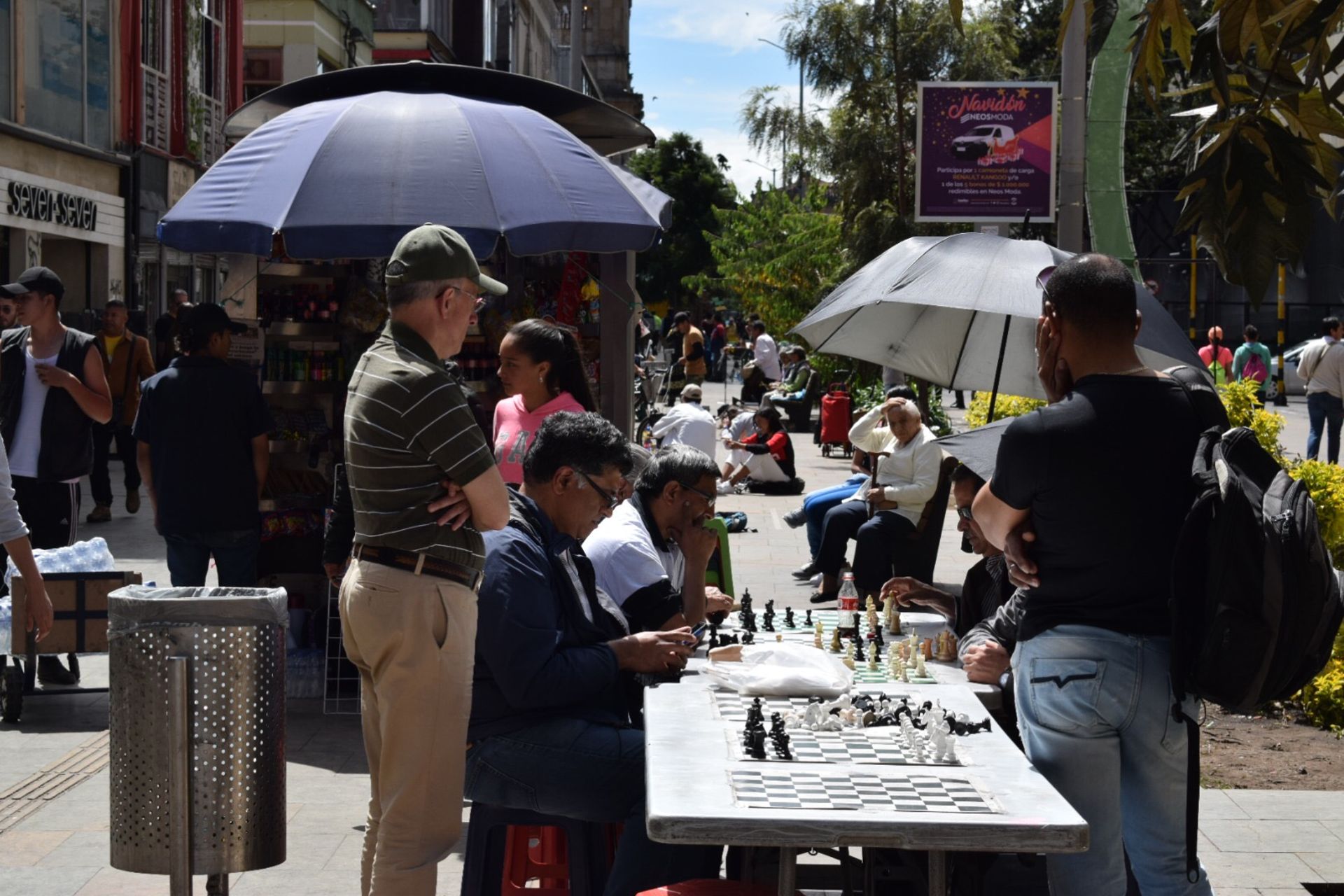
Very nice, especially since Septima, the main shopping street, is completely car-free and equipped with a bike lane. On the way back, we did some shopping because we didn't want to go out with poor Jona anymore, so we had a delicious Christmas Eve dinner at home.
The next day we took the Transmilenio to Usaquen; quite far away from us; not only in terms of distance but also in terms of the neighborhood: fancy bars and restaurants, even more, also private security than here and many walls with presumably incredibly beautiful houses behind them. Absolutely worth seeing!
By the way, besides buses and taxis, there were no cars on the main roads, everything was closed for cyclists.
Home, eat and good night.
On Wednesday, we walked to the overrated Museo de Oro after breakfast, and then Anna and I made a detour to the Bolivar House, which is really fantastic: the house is furnished as it was in the past, surrounded by a beautifully landscaped garden.

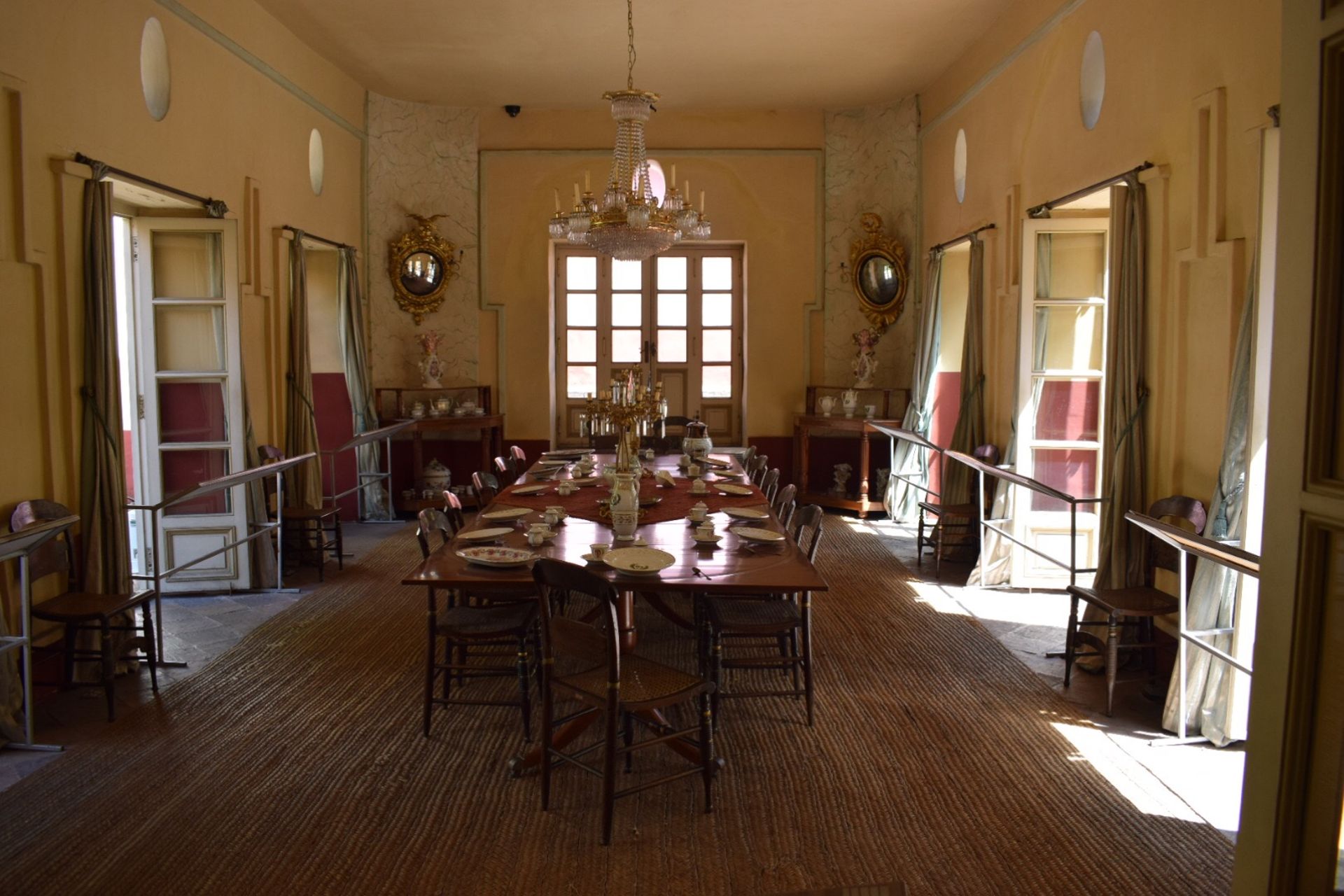
Back home, packing and off to the airport, next destination Pereira, Zona Cafetera. By the way, since I didn't have the address of our Finca, our taxi driver had to ask for directions. We also had him inquire if there was any food available at Finca Bellavista, our next place of stay. Since the answer was no, we had to make a small stop for dinner, including Fernando the taxi driver.
When we arrived at Finca Bellavista; we had a very mixed impression: a very beautiful complex with a very large property, many rooms, large kitchen, veranda, pool, barbecue area, so basically everything top; but also right on a country road with truck traffic and simple, mismatched windows, so the noise inside is the same as outside.

Contrary to any Airbnb habit, there was nothing in the kitchen except a pound of salt; no oil, no pepper, no coffee, just nothing.
In addition, there was nothing within a kilometer of the area; however, the caretaker drove me with his moped to the village the next morning so that I could buy breakfast.
Afterwards, we chilled by the pool in the morning and at one o'clock set off for Filandia, where we walked a kilometer up the main road and then flagged down a bus to Filandia; a small village on a mountain, which is considered one of the most beautiful places in Colombia due to its colorful painted house facades; rightly so!!!

You can enjoy the breathtaking view into the Zona Cafetera at every edge of the village and everything is full of small shops and cafes.
Unfortunately, the information you get in Colombia is always well-meaning but not always true: so despite assurances to the contrary, we apparently missed the last bus departure for dinner. Stupid!

So we had to split it up: a Willy took us to Las Cruces, to the main road, where we were supposed to catch a bus. It didn't work out: too dark, too steep, who knows......
Luckily, there was a police station directly across the street, which first wanted to assure us that there was indeed a bus and we should just wait a moment. When no bus came after three quarters of an hour, the police finally decided to drive us to the nearby toll station where buses can easily be flagged down. That's how it happened, but I never dreamed I would voluntarily be transported in a police car.....
Similar game the next day: after breakfast, we went onto the country road and flagged down a bus. This time to Salento; a similar route. Once there, we took care of the logistics first and then went to the Cocora Valley after a short walk through the city crowded with visitors.
In a Jeep from 1974, called Willy, with 13 people; Dagmar, I and two other passengers standing behind the tailgate, we drove the scenic 10-kilometer route to the start of the hiking trail. From there, we walked along the Río Quindio for 3 hours in bright sunshine.

First through a valley landscape that could also be found in the Alps, if it weren't for the oversized wax palms that here and there tower over the treetops and the horses that carry lazy tourists up the hill.
After about an hour of easy ascent, you reach the cloud forest, which, due to the sunny weather, was not foggy but pleasantly cool. However, visually still like in the hottest jungle. In the meantime, we had to cross the river several times on adventurous suspension bridges.

Since we didn't want to do the complete 12-kilometer loop, we turned around after about 2 hours.
Back in Salento, this time with Anna and Jona standing at the back of the Willy, we sat down in a grill house with a panoramic view and wifi, La Parrilla, where we ate delicious food and at least got the first night's accommodation in Medellin sorted out. The way back to the finca was also unproblematic, luckily we already had bus tickets.
The next morning, we wanted to get up early, but had some trouble getting a taxi from our finca to the Pereira bus station. But at around 10 o'clock, we finally made it and shortly afterwards got on a bus. Almost 200 kilometers in 6 hours. Unbelievable, but because of the mountains, you just can't get anywhere quickly.
But you can enjoy the fantastic landscape!


After 6 hours, we finally arrived in Medellin and immediately went to our accommodation. A fantastic hostel, guesthouse 61, but unfortunately in a really strange area. We immediately went out to explore the surroundings and walked along the impressive elevated railway that runs from north to south through the city. There was a market there, which extended to the city center, to Plaza Botero, but anything but beautiful. I felt quite uncomfortable with all the broken figures walking around. The plaza was also crowded with people and while looking for a restaurant, we apparently stood on a corner where we shouldn't go any further, as an attentive policeman made us understand.
And so, after dinner, we took a taxi back, which was also good. With all due respect, but the area around our guesthouse is quite shady.
The next day, we still didn't quite get the hang of it. What's so special about Medellín? The Parque paisa definitely isn't; you walk up the hill and arrive at a reconstructed paisa village, where there are only tourist shops. The neighborhood of Laureles, which we visited afterwards, was very bourgeois, a stark contrast to our area in Prado, but also not very convincing: apartment buildings are lined up next to restaurants and fancy residential buildings, one after the other. . ..
Medellín just doesn't really appeal to us. What on earth is so special about the city that everyone is so excited about?
In a café, we then considered whether we should still go to our next point: Zona 13. The problem neighborhood of Medellín par excellence. At the time of Escobar, it was the area with the highest murder rate in the city with the highest murder rate in the world.
Decisive action by the state apparatus and a few escalators are said to have tamed the neighborhood. But well, should one really go to a slum to look at escalators?
You have to!



We spent the whole afternoon there, and it becomes very understandable how the city has become the most innovative in the world and what the Medellín model means, simply fantastic!
On New Year's Eve, we took a guided tour for the first time: Guatapé. It was actually very well done. Stop at an old village, Manilla, very agricultural with very delicious freshly prepared food, such as pastries and fruit at very reasonable prices.
Afterwards, we went to Peñol de Guatapé. For this, you need to know the following: The Peñol is a rather large, completely unsuitable rock in the middle of a hilly landscape.
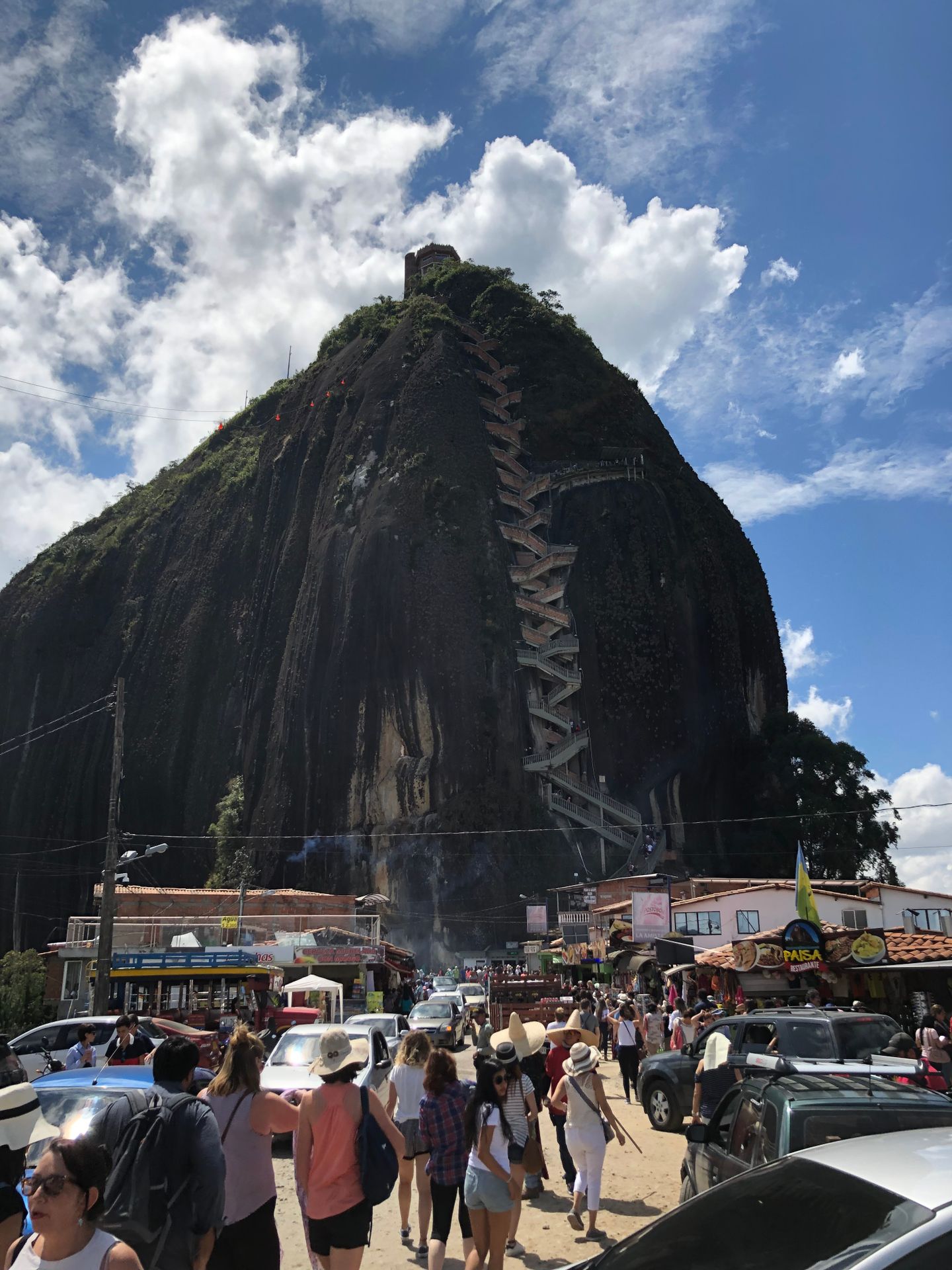
In the seventies, a dam was built, which at least partially flooded Guatapé and some surrounding villages. The resulting reservoir is considered by many Colombians to be the most beautiful view in the world, as the reservoir is not just a lake due to the topography, but because of the hilly Andean foothills, many islands emerge from the water.

Even though numerous tourists now want to climb the rock; it's peak tourist season after all, we didn't miss the spectacle and climbed all the way to the top. And it was worth it:


By the way, on December 31st, Colombians celebrate Carnival; they dress up, sing funny songs, and drink quite a lot. There are also dolls standing everywhere in the country. Our tour guide explained to us that these dolls are sometimes given names of unpopular people and they are burned at midnight on New Year's Eve. This erases all misdeeds of the past year. So it's a 1:1 South American version of the Nubbel; Alaaf!
In the evening, we changed our accommodation and visited an Airbnb in El Poblado.
There, we experienced New Year's Eve in the middle of a lively and noisy plaza, with hundreds of dancing and drinking Colombians and tourists.
The next day, we strolled through El Poblado, which is highly praised, on foot. But neither the Casa Escobar nor the Museo de Arte Moderno appealed to us: too expensive or closed for New Year's.
Well, apart from Ramba Zambia nightlife on the one hand and impressive luxury real estate, El Poblado didn't have much else to offer from our point of view. However, the residential complexes were quite something: as we already knew from our Brazilian tenants, South Americans really like modern high-rise buildings. Here in Medellin, every development is secured like a high-security facility: fence, cameras, private security, etc. Many houses have the entire ground floor reserved for representation purposes and are guarded by a receptionist. Pools are always included...
The next day, we went to the impressive Museo de Arte, moderno, where there was a temporary exhibition of Colombian photographers and video artists.
In the afternoon, we went to Santa Marta, the Caribbean. Previously, we had managed to find accommodation for 4 in the Villa Mary. Unfortunately, not as desired in Palomino, a place right on the beach behind Tayrona National Park, but in Taganga, a bit northeast of Santa Marta; Villa Mary. When we arrived, it was already dark. The hostel was ok and the owner and the staff were super nice.
Taganga, on the other hand, is not necessarily worth a visit. There's actually nothing there. Despite that, and it will accompany us for the rest of our trip: peak season. Everything is just crowded. It is so crowded, in fact, that you can no longer get tickets to the national park. Since the beach in Taganga was not very appealing either, we drove with the daughter of the hostel owner and her stepfather along the coast, past the national park, to Palomino in the hope of finding accommodation for the last few days, which was not possible online because everything was booked out.
In Palomino and earlier in Buritaca, a similar picture emerged: beautiful beaches, but all crowded with tourists. It is the peak travel season for Colombians.
Nevertheless, we made it! A four-bed room in a very nice complex, I'm curious, in two days we will move in.
By the way, for the 80 km return trip, it took us 3 and a half hours due to traffic jam!
Since, as I said, Taganga doesn't have much to offer, except for very delicious fish, we took a boat trip to the Crystal Bay the next day, like many others. You can get upset about it, but it doesn't help, the others also want to enjoy their free time. So we went with 20 people on a boat with 2 outboard engines through the Caribbean Sea. And it's pretty rough once you leave the coast behind. Going full speed through the trough of waves, it's nothing for the faint-hearted: Anna and Jona laughed their heads off, but we also had a few casualties in the boat....
Anyway, we arrived and managed to get a table in the shade. The beach was really beautiful, white sand, turquoise water, and coral reefs for snorkeling. In the evening, we briefly went to the promenade, where you can eat delicious food, but it was extremely loud with Rumba music playing from everywhere. Regarding Taganga, it should be mentioned that one of the oldest churches in South America is located there, and I'm sure I've seen it in a Western movie before.
The next day, we were driven to Palomino after the female household of Villa Mary said goodbye to us with great enthusiasm.
The hostel was really great; an oasis of calm in the pretty crowded Palomino. The beach is absolutely beautiful, although quite crowded. But the sea was much rougher than I expected in the Caribbean.

Doesn't matter, the beach stretches over 6 kilometers, so you can choose your private beach area after walking for a while.

I did that on the second day as well. Unfortunately, I left my things unattended after swimming and they were gone. Including my glasses and phone. So, it turns out I wasn't completely alone.....
Annoying, hopefully the quite weak internet was enough to at least upload some photos to the cloud. We'll see when we get back.
There, we spent three days, I also cycled with Anna to the next but one village, Mingueo. Unfortunately, the coastal road was not very easy to navigate with the pretty bad bicycles, especially since it was quite hilly, something you're not used to coming from Berlin and Brandenburg.
There was the only ATM nearby, and we could only pay in cash. I also wanted to find out whether we could take a bus directly from Palomino to Cartagena. No clarification, but I did buy a hammock.
Huges, our driver, picked us up again in Palomino and dropped us off at the Berlinave counter in Santa Marta, from where we started our journey to our final destination: Cartagena!
Wow, what a city: we stayed in an Airbnb in El Centro, overlooking the city walls and the sea. A corridor with two rocking chairs invites you to relax right in the middle of the historic center.
We also went to the beach near our house and I took care of the rocking chair on the veranda extensively before we headed back. From the Caribbean, pineapples, and hammocks to rain, black bread, and work, it was beautiful!
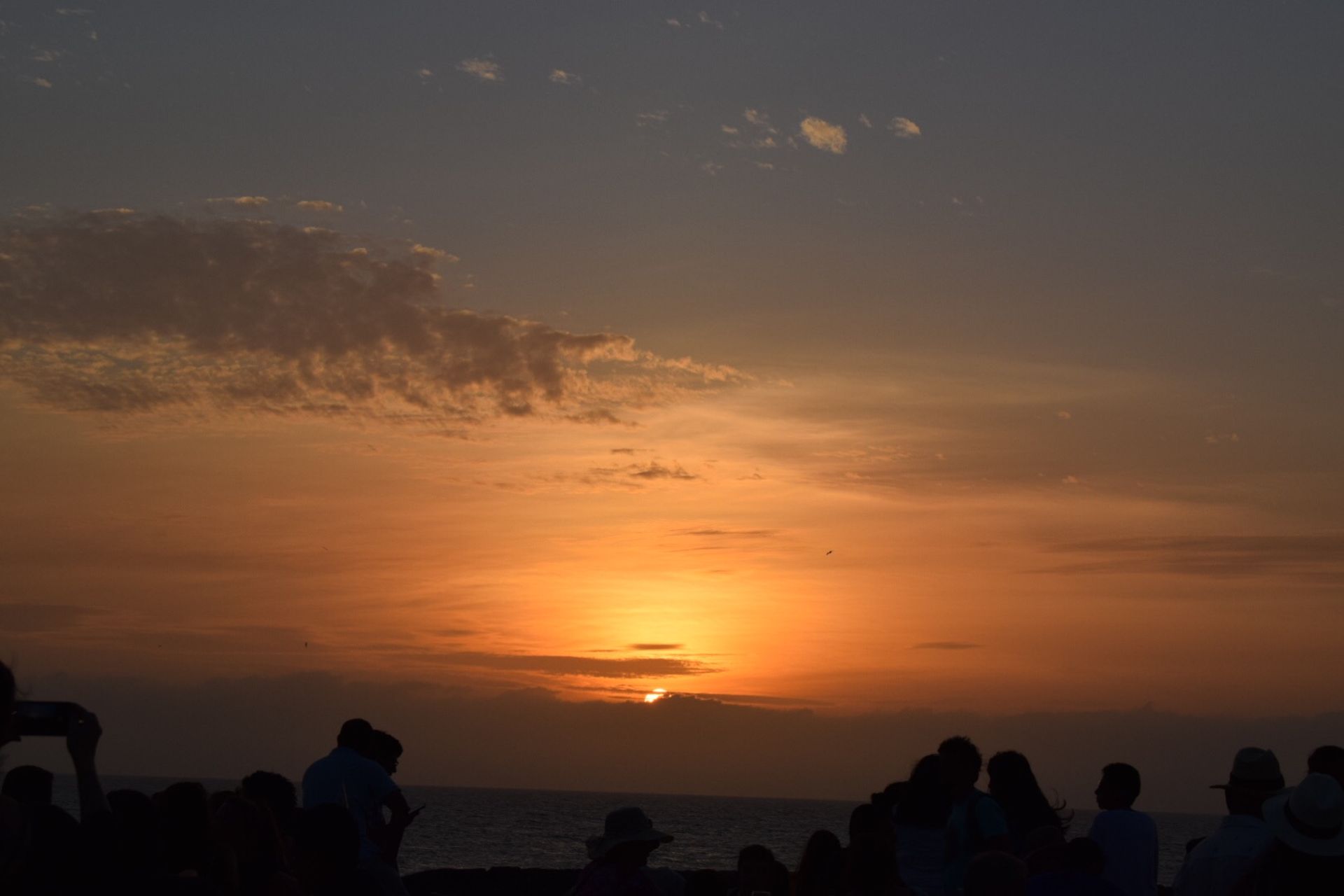
Iscriviti alla Newsletter
Risposta

